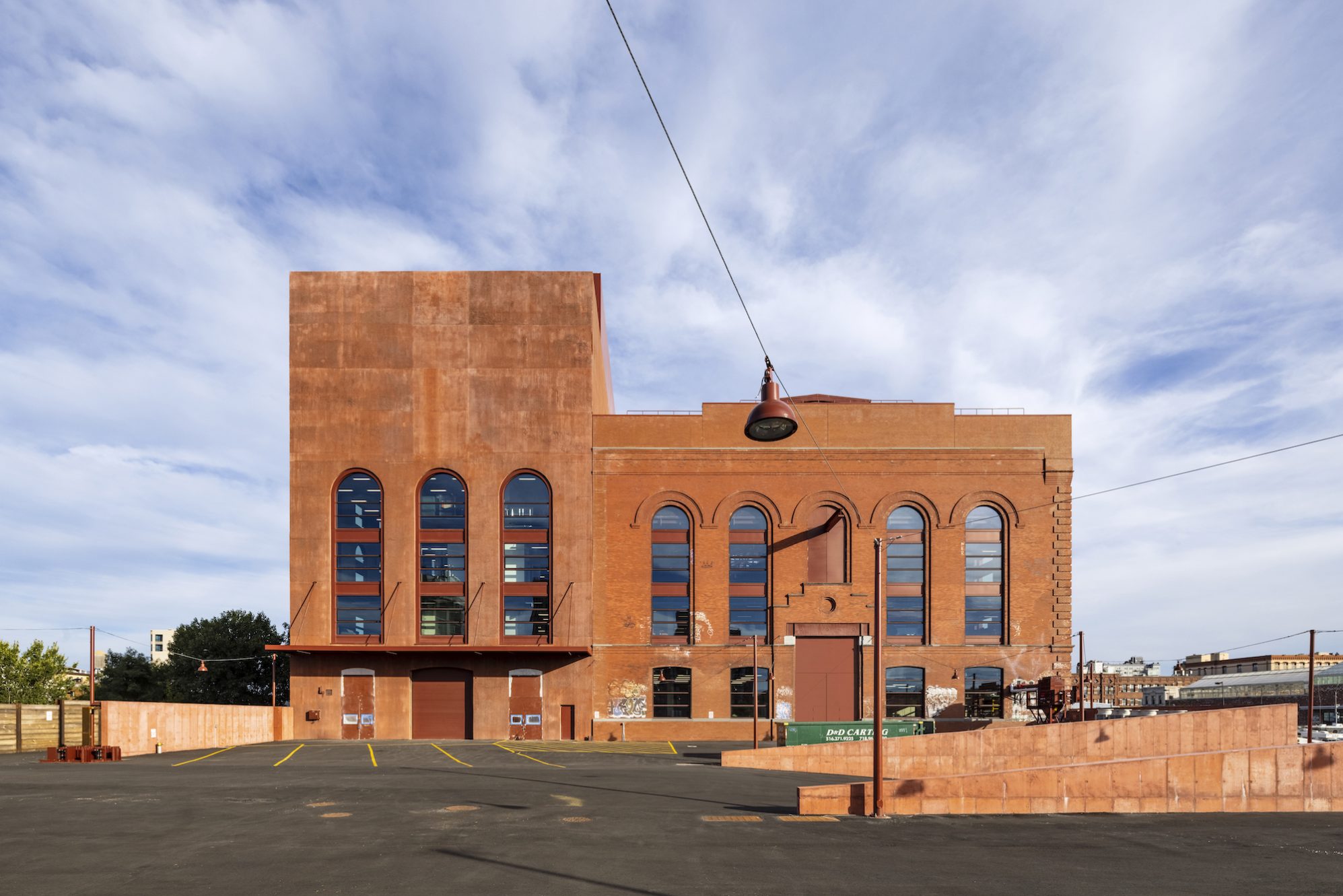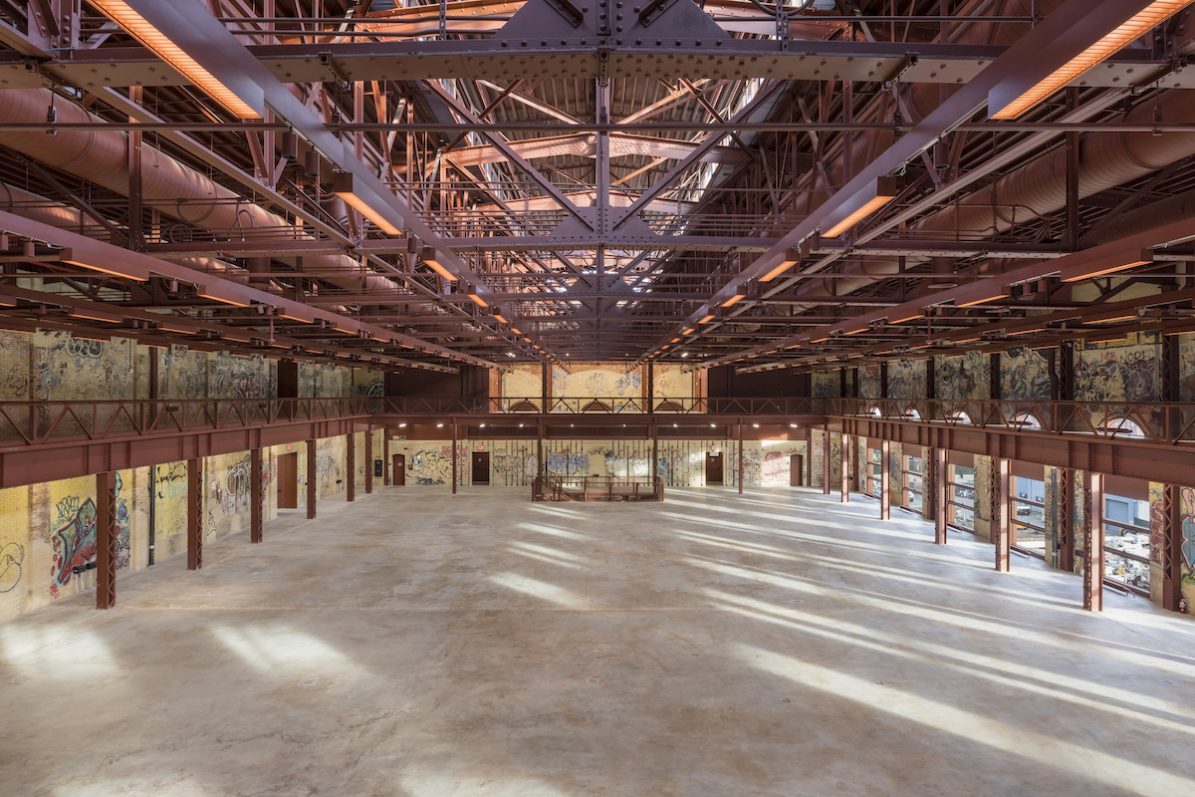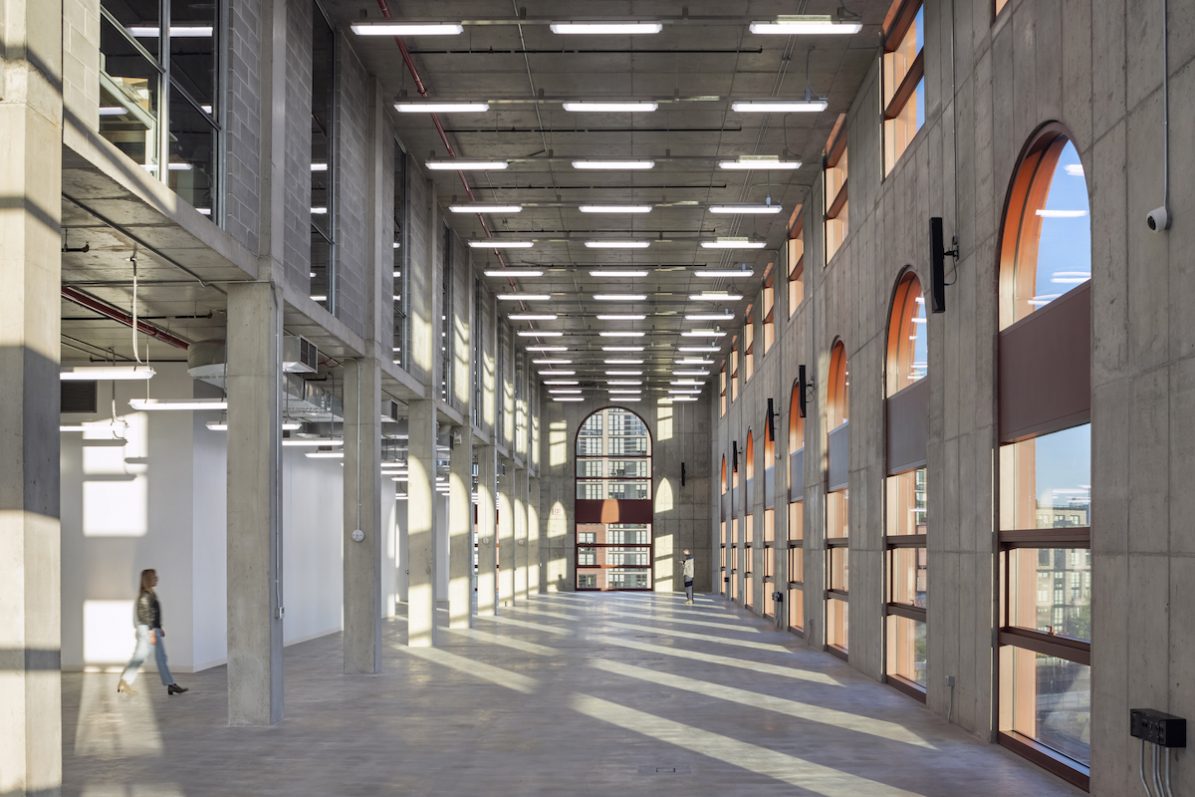It’s fitting that New York City, often referred to as Gotham, would have its very own Batcave. Situated at the edge of Brooklyn’s perennially polluted Gowanus Canal is a red-brick industrial building once home to the Brooklyn Rapid Transit Company’s central power station. The six-story structure was decommissioned in the 1950s when steam power became obsolete. It was completely abandoned within a couple decades, causing its roof to give way and plants to sprout in its interior. Then the squatters arrived, blanketing its walls with graffiti and throwing all-night raves that earned the site its infamous nickname.
Seeing potential in the derelict building, philanthropist Joshua Rechnitz purchased it in 2012 and has since invested more than $180 million through his foundations to steward its transformation into a community-focused contemporary arts hub. He formed the Powerhouse Environmental Arts Foundation—since renamed Powerhouse Arts—and enlisted PBDW Architects and Pritzker Prize–winning firm Herzog & de Meuron to overhaul its cavernous interior. They quickly got to work decontaminating the property from toxins leached from the canal, which the EPA designated a Superfund site.
After a decade-long revamp, Powerhouse Arts officially opened this past week. The venue will offer state-of-the-art fabrication facilities for ceramic, print, and public art, as well as space for events and education. Eric Shiner, the venue’s newly appointed president and former director of Pittsburgh’s Andy Warhol Museum, developed the offerings in dialogue with local artists who spoke to the struggles of maintaining a studio in an increasingly costly city. Many have already decamped to the Hudson Valley to find spacious digs at cheaper rates. Powerhouse will “amplify those voices,” he says, likening it to Warhol’s Silver Factory, “a place where creative energy, innovation, and joy intermingled to create a vibrant arts ecosystem.”
Keeping the wheels turning won’t come without challenges. Rechnitz stepped away from the board last year after the building was completed to pursue an “organic farm project” upstate. Powerhouse hopes to be fully self-sufficient in five years, but will rely on a mix of fees for studio spaces, venue rentals, and philanthropy to stay afloat. The first two might come easily—the printer Luther Davis was hired to pilot the Powerhouse Arts Prints Program and brought his print shop there after his shop, which collaborates with artists like Glenn Ligon and Amy Sherald on more than 300 projects per year, was forced out of his Brooklyn warehouse. He described the space as “a glorious gift,” even as construction was underway.
Programming will likewise be a gift to the community. To celebrate the opening, Powerhouse commissioned a six-hour performance by artist Miles Greenberg, who will create a bright orange lagoon where participants will battle one another like video game avatars. Its public art fabrication team assisted with producing Charles Gaines’ giant ship artwork on Governors Island. An exhibition of final projects by MFA students at Brooklyn College will grace the lobby until June 21. “As fabrication shops disappear from the city,” architect Jacques Herzog says, “the building will serve local artists and the community for generations.”


